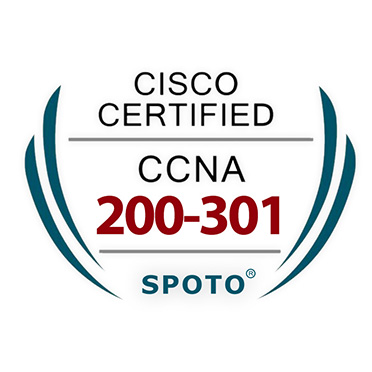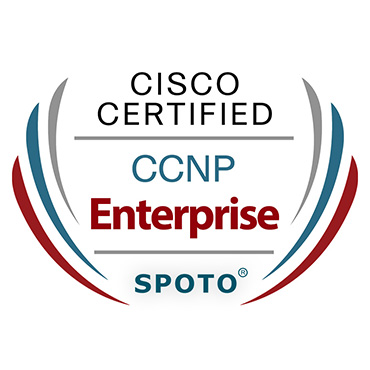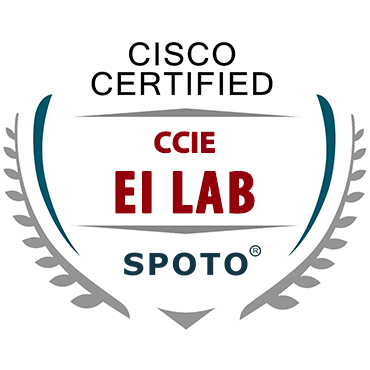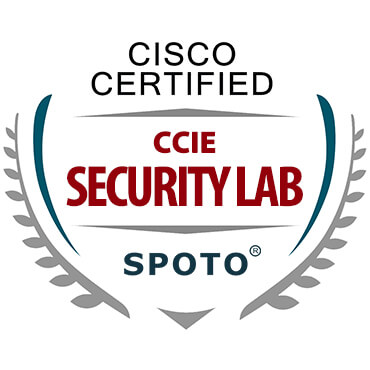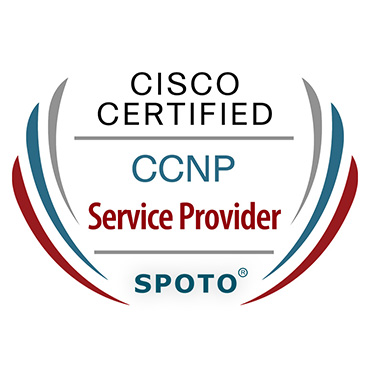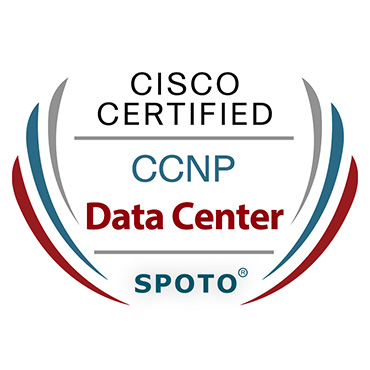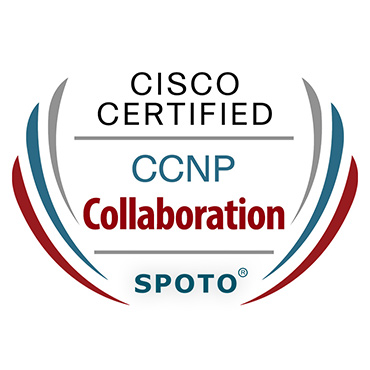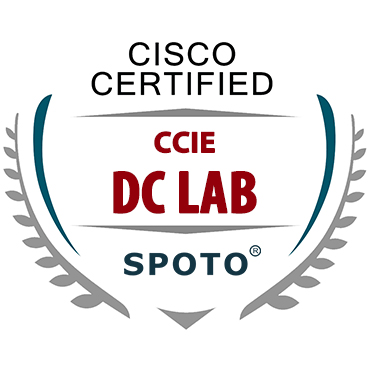Enhanced Interior Gateway Routing Protocol (EIGRP) is a unique Cisco innovation. Highly valued for its ease of deployment and fast convergence, EIGRP is commonly used in many large Enterprise networks. Cisco certification will be your best choice in your IT career.
1, Enhanced interior gateway routing protocol (introduction)
EIGRP protocol is an internal gateway protocol, advanced distance vector protocol, multicast address 224.0.0.10
2. Characteristics of EIGRP
1. eigrp is an advanced distance vector protocol
2, eigrp has high-speed convergence characteristics
3, support route summary and route aggregation
4, eigrp supports triggered incremental updates
5, eigrp can support multiple network layer protocols, can open multiple eigrp processes to support different Layer 3 passive routing protocols.
6. eigrp sends packets to multicast address 224.0.0.10 in multicast and unicast mode.
7, eigrp supports manual summary
8, eigrp guarantee 100% no loop
9, eigrp deploying eigrp configuration on the WAN or LAN is relatively simple
10, eigrp supports non-equivalent load balancing
3, eigrp package and message
The field in the Eigrp header is used to describe what the eigrp message is.
In the payload field of the hello message, there is an ack bit, which is 0 in the normal case. When the ack bit is set to 1, the message is an acknowledge message.
2.2 EIGRP's eight messages
The TTL field of the IP header in all IGP protocols is 1
1. Hello(ack): When the port is greater than 1.544mbit/s, the transmission frequency is 5s, and if it is less than 1.544mbit/s, I am 60s once. If the hello packet is not received for 3 consecutive hello times, the neighbor is hanged. By default, hello packets are sent in multicast mode. In a Layer 2 environment that does not support multicast, such as a frame relay environment, you need to manually modify the specified unicast address neighbor 1.1.1.1 255.255.255.0
Eigrp packets can be sent reliably, so eigrp defines a reliable transport mechanism, an internal definition of the acknowledgment mechanism, but not all eigrp messages need to be confirmed, update, query, and reply need to reply ack, if there is no reply Then retransmit, the number of retransmissions is 16 times.
In the payload field of the hello message, there is an ack bit, which is 0 in the normal case. When the ack bit is set to 1, the message is an acknowledge message. When the ack bit is set to 1, it can only be used. Sent in unicast.
2. Update: Packets used when routing entries are updated. Update packets are sent in multicast mode. You can also configure unicast transmission.
3, Query: When going to the destination network segment, the best path is down, and there is no backup path in the local. At this time, the query is sent to the neighbor to query whether the neighbor has an entry to the destination. This algorithm is called diffusion update calculation. Support unicast and multicast, default multicast transmission.
4, Reply: used to reply to the Query package, only supports unicast transmission. The 180s did not receive the response packet and reset the adjacency directly with the neighbor.
5, request: An early message is no longer used, this message is similar to the rip request message, because eigrp convergence speed is too fast, there is no need to set the request message, the message has been canceled today.
Down neighbor mode: The hello packet has no reply 3 times, and the retransmission 16 times does not answer. The path is down.
6. SIAquery: Packets generated after Cisco upgrades eigrp. After sending the query packet under normal circumstances, if it does not receive reply, it will wait for reply until it resets the neighbor relationship after 3 minutes, if it is in some network congestion environment. , will not get a response. After the upgrade, the SIA query is generated. After the query is sent, the Activetime timer starts. The default value of the timer is 90s. After the neighbor receives the SIAquery, it will reply SIAreply to indicate that the router is helping him to query the route. If it does not reply, it will be heavy. Set the neighbor relationship until after receiving 7 SIA queries, the real reply containing the route entry has not been received. At this point, it will wait for another 180s. If it has not received, it will reset the neighbor relationship.
7, SIAreply: used to answer SIAquery, cios 12.3 and later ios will contain these two messages
8. goodbye: When no router eigrp 100 is input to a router or an interface running eigrp is liberated from eigrp, eigrp will send a goodbye message to the neighbor. The value of K1--K5 is set to 255 in the message. Indicates that I have already left, and the messages will appear in Cisco 12.3(2), 12.3(3)B, 12.3(2)T and newer versions.
4. The four underlying mechanisms of EIGRP
1. Neighbor discovery and establishment mechanism
The adjacency is maintained by periodically sending hello packets. Three conditions must be met to establish a neighbor relationship:
A/ Receive hello message or ack B/match as number C/same metric
The D/Router ID is different. The router is learned in the same way as ospf. The priority is manually specified, the loopback interface, and the maximum port ip address.
2, reliable transmission
The reliable transport protocol RTP implements reliable transmission by adding some fields in the eigrp header. It has a mechanism of retransmission and packet loss prevention. The ack is received every time it is sent. When no ack is received, the sender will be heavy. The message is transmitted, and 16 consecutive retransmissions do not receive a response ack, and the neighbor relationship is dropped.
1, DUAL algorithm is divided into local calculation and dispersion update calculation
2. The protocol related module PDM is used to support different routing protocols. Eigrp only supports IPv6 after Cisco 12.2.
5. Three tables and five concepts of EIGRP
5.1 three tables
The EIGRP Neighbor Table contains two important fields, the neighbor router and the direct connection to the neighbor router. Eigrp first creates the neighbor relationship and then sends the update.
The EIGRP topology table adds two important fields, FD and AD, in the topology table, and performs the DUAL algorithm to select the optimal route The IP router table, put all the best paths through the DUAL algorithm into the routing table and use the routing table to forward The route to each destination network segment.
5.2 Five values
FD (feasible distance): The metric of the router to the destination address. By comparing the FD, the routing table with the smallest FD of the optimal route is selected.
AD (advertise distance): The advertised distance of the next hop router to the destination
FC: The ad entry of the suboptimal path can be the backup route of the optimal route entry as long as it is smaller than the fd of the most routing entry.
6, EIGRP metrics
1, Bandwidth (total bandwidth of the link): take the minimum bandwidth in the entire path, EIGRP bandwidth Extract the minimum value of the bandwidth of the control plane routing entries to all inbound interfaces as the path bandwidth
2. delay: Take the sum of all delays and extract the sum of all delays of all incoming interfaces to which the control plane routing entries flow.
3, loading (load): how many packets are carried by the path, taking the maximum load of all network segments
4. reliability: The reliability of the link, taking the minimum value of reliability.
5, MTU (maximum transmission data unit): take the minimum value of all MTU values in the calculation formula of the path metric
K1, K3=1, K2, k4, k5=0
{[K1*BW + ((K2*BW)/(256-LOAD))+K3*Delay]*[K5/(Reliability + K4)]}*256
Generally speaking
Metric = K1*BW + K3*Delay
BW = 10^7/BW(min) (unit: kbit/s)
Delay = us/101s = 10^6 um
Advanced Features
1. Automatic summary of EIGRP
EIGRP's automatic summarization rules are different from RIPv2. EIGRP only supports summarizing routes that do not pass neighbors by local route summarization. After the automatic summarization, a summary route to the null0 port is generated locally.
2. Manual summary of EIGRP
Manual summarization can summarize non-local routing entries and summarize the routing entries passed by neighbors.
Ip summery-address eigrp 100 10.0.0.0 255.0.0.0
Configuring a route leak list
Access-list 10 permit192.168.8.00.0.1.0// Grab routing entries
Router-mao cisco permit 10 // Call access-lisst Ip summery-address eigrp 100 10.0.0.0 255.0.0.0 leak-map cisco in router-map //call router-map in leak-map
Leak-map: This tool is used to release a detailed routing entry within a manually summarized routing entry.
Route-map: used in this example to call acl to fetch the detail routing entries that need to be released at the control plane.
ACL: Used directly to fetch routing entries.
3, EIGRP stub (last node router)
After the last router is set, other neighbor routers will not send the query packet to the last router, but the last router can send the query packet to the neighbor. The eigrp stub command is used to set the stub router. The router sets the stub field to 1 in the hello packet. To indicate to the neighbor that this router is a stub router, you can do some routing control by setting some stub fields. At the end of the redistribution of routing entries on the last router, by default, the router will not forward the redistributed routing entries to the neighbors, but you can do it manually. It is recommended to only set the most edge router as the last router.
Stub stub receive-only//Receives route updates only, does not send route updates. When receive-only is enabled, Stub stub connection// can only be used with other fields to send directly connected eigrp routing updates. Others do not send stub stub summary. // Only send summary routes, do not send routes that have not been summarized, do not send routes that are not configured for summary, and only send routes that are summarized locally. The routes sent by neighbors cannot be sent if they are not summarized locally.
Stub stub static//redistributed allows the stub router to advertise the static route after redistribution
Eigrp stub leak-map// You can use the leak-map tool to have the stub router send detailed routes
4. Summary of disconnecting neighbors
A / modify k value
B/ When sending 3 hello time, the hold time expires
C/retransmission 16 times disconnected
180s after the D/ update packet is sent, that is, the timers active-time expires.
E/certification expired
F/AS number is changed
5, eigrp certification basic certification
Eigrp only supports cipher text authentication, and can include multiple keys in eigrp's keychain certification. A periodic key can be implemented. Is based on link (port) authentication.
Keychain certification
When there are multiple keys on the authentication keychain, they can be discussed separately:
1. When the sender has more than one key, by default the sender will select the key with the smallest key id as the authentication key.
2. When the receiver has more than one key, when the receiver receives the message with the authentication key, it will match all the keys existing by the party.
Advanced application for keychain certification
Key chain r1
Key 1
Key-string cisco
Send-lifetime{infinite | permanent-time, end-time | duration (send period unit s) seconds}
Accept-lifetime{infinite | permanent-time, end-time | duration (send period s) seconds}
Key 2
Key-string text
Send-lifetime{infinite | permanent-time, end-time | duration (send period unit s) seconds}
Accept-lifetime{infinite | permanent-time, end-time | duration (send period unit s) seconds}
Key 3
Key-string guoxiwen
Send-lifetime{infinite | permanent-time, end-time | duration (send period unit s) seconds}
Accept-lifetime{infinite | permanent-time, end-time | duration (send period unit s) seconds}
Int f0/0
Ip authentication key chain eigrp 90 r1
Ip authentication mode eigrp 90 md5
Explanation:
Send-lifetime// Under what circumstances can I use this key for sender authentication?
Accept-lifetime//When can I use this key for recipient authentication?
2, experiment
If you want to change the k value of the metric calculation formula, you must change all
1, troubleshooting commands
Show ip rout eigrp 100//Show all routing entries in eigrp100 Show ip protocol //Show protocol can see the detailed parameters of the routing protocol Shwo ip eigrp interfaces //Show the interface that opens the eigrp process Show ip eigrp neighbors detail//Show neighbors Table details
2, load balancing
Maximum path 1 //How many pairs can be allowed when load balancing is enabled. When set to 1, disable load balancing.
Variance 2 //Set the load balancing multiplier
3, commonly used commands
No auto summary // Turn off automatic summarization
Eigrp router id 1.1.1.1// Manually set the router id
4. Inject the default route into the EIGRP domain.
Method 1: Route Redistribution
Specify a 0.0.0.0/0 default route to the external network on the AS border router, and use Redistribute static in its EIGRP process to send the default route to other EIGRP routers in the domain as EIGRP routes.
Method 2: network all 0
Specify a 0.0.0.0/0 on the AS border router and associate only the static route of the outbound interface and use network 0.0.0.0 in the EIGRP process of the router to import the route into the EIGRP domain (Network 0.0.0.0 is equivalent for EIGRP) RIP)
Method 3: Specify the condition that default uses ip default-network
1. Specify the ip default-network+ primary class address segment on the AS border router (the primary network segment to which the router connects to the address of the external network interface).
2. Create the main class routing entry on the router.
A/ You can create a primary class route entry by route summarization.
B/ You can create a primary route entry by manually specifying a static route.
3. In the EIGRP process of the router, network the main class address segment.
4: Route aggregation The interface connected to the intranet on the AS border router implements the decentralization of the default route by using route aggregation.
Ip auto-summery eigrp 100 0.0.0.0 0.0.0.0
5, use the access-list to do eigrp update control
Access-list100deny88host12.1.1.2host12.1.1.1
Access-list100deny88host12.1.1.2host224.0.0.10
Access-list100permit 88anyany
Int f0/0
Access-group 100in
When using acl to access the control list most eigrp update control, it must block both unicast and multicast update packages.
6, change the metric of eigrp
1, change the k value
You must change all k values at once when changing k worthwhile
Router eigrp 100
Metric wights 0 (type of servers)k1k2k3k4k5
This value is not a k value when the change metric is worth the first value, and the service type used to do qos currently supports only 0 values.
2, modify the bandwidth and delay
Bandwidth 10000(kbit/s) Delay1000(us)
3, modify the offset list
The idea is to use the Access-list to fetch routing entries and the offset-list to adjust the metrics of the inbound and outbound interfaces. Modifying the offset list can only make the metric value larger.
Access-list 10 permit 3.3.3.0
Router eigrp 100
Offset-list 10 out 300 f0/0
After acl-10 is called in the out direction of port f0/0, the metric value of the route entry fetched by acl is increased by 300.
7, change the hello time and hold time
Int f0/0
Ip hello-interval eigrp 100 8(s) Int f0/0
Ip hold-time eigrp 90 24(s)
8, change the timers active-time
Router eigrp 100
Timers active-time 200(s,disable)
9, passive interface
As long as the port is set to the passive interface, eigrp will not be able to send and receive any eigrp packets, regardless of unicast multicast or broadcast eigrp packets.
The network segment connected to the pc can be placed as a passive interface
Router eigrp 100
Passive-interface f0/0
10. Unicast transmission of eigrp
In the FR environment where the pseudo broadcast feature is not enabled, the unicast update is required when using the eigrp protocol.
Neighbor 12.1.1.2f0/0
Eigrp must specify the interface to the neighbor when specifying the unicast object.
If you want to use the unicast feature in eigrp, the neighbors must use the unicast feature.
11, horizontal segmentation of eigrp
In the eigrp protocol, it is necessary to turn off horizontal splitting, not only to turn off physical horizontal splitting, but also to close a 4-layer protocol horizontal split, which is suitable for the frame relay environment.
Interface f0/0
No ip split-horizon
No ip split-horizon eigrp 90

 Join Telegram Study Group ▷
Join Telegram Study Group ▷
